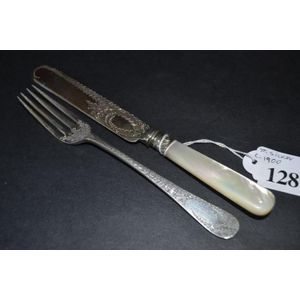Assorted Close Plated Kitchen Utensils
You must be a subscriber, and be logged in to view price and dealer details.
Subscribe Now to view actual auction price for this item
When you subscribe, you have the option of setting the currency in which to display prices to $Au, $US, $NZ or Stg.
- Close Plated (silver Plating) - Close plating is a process where a very thin layer of silver is deposited onto a base metal, usually using an electrolytic process, but sometimes electroless as well. The thickness of the silver coating is usually between 0.05 and 0.1 microns. It is used to enhance the appearance of the base metal.
It is similar to the process of silver plating, where a thin layer of silver is deposited onto a base metal using an electrolytic process. This process is also generally used to improve the appearance of the base metal or to protect it from tarnishing. The thickness of the silver coating can vary depending on the application, but it is usually between 0.25 and 2 microns.
Close plating and silver plating are similar processes in that they both involve coating an object with a thin layer of silver. However close plating applies a much thinner layer of silver. The term "close" is used because the layer of silver is so thin that the base metal color is still visible through it. - Close Plate - Generally made in Birmingham in the 18th century and the first half of 19th century, close plate consists of silver foil soldered onto a steel base that had been dipped into tin, and was used for items such as candle snuffers, knife blades, buckles and spurs requiring greater strength than fused plate. With advances in technology, the process was obsolete by the mid 19th century.
This item has been included into following indexes:
Visually similar items

Four sterling silver Linton Arts & Crafts style bread knives stainless steel blades with hammered Arts & Crafts motifs to handles stamped 'Jal St Silver' with gumnut mark. Length 22.5 cm

Sterling silver child's fork and knife, mother of pearl handles, c.1900

Oriental comb, ear cleaners and razor

Three pairs of asparagus servers, the first with pierced blades, maker GH, Sheffield 1912. The second with plain handle and foliate piercing, maker HA, Sheffield 1880; and the third silver plated blades and silver ferrules, Birmingham 1894. (3)
